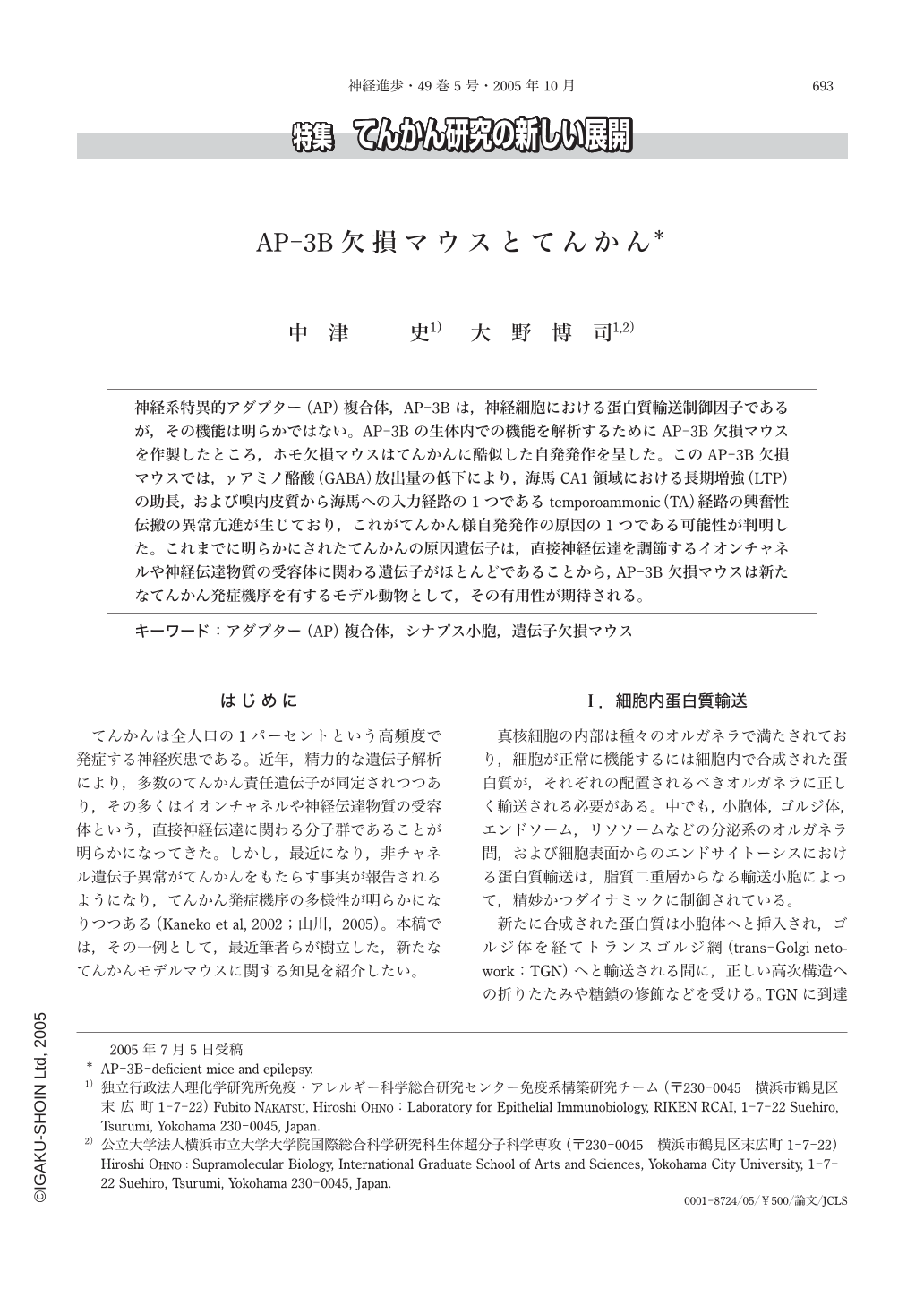Japanese
English
- 有料閲覧
- Abstract 文献概要
- 1ページ目 Look Inside
神経系特異的アダプター(AP)複合体,AP-3Bは,神経細胞における蛋白質輸送制御因子であるが,その機能は明らかではない。AP-3Bの生体内での機能を解析するためにAP-3B欠損マウスを作製したところ,ホモ欠損マウスはてんかんに酷似した自発発作を呈した。このAP-3B欠損マウスでは,γアミノ酪酸(GABA)放出量の低下により,海馬CA1領域における長期増強(LTP)の助長,および嗅内皮質から海馬への入力経路の1つであるtemporoammonic(TA)経路の興奮性伝搬の異常亢進が生じており,これがてんかん様自発発作の原因の1つである可能性が判明した。これまでに明らかにされたてんかんの原因遺伝子は,直接神経伝達を調節するイオンチャネルや神経伝達物質の受容体に関わる遺伝子がほとんどであることから,AP-3B欠損マウスは新たなてんかん発症機序を有するモデル動物として,その有用性が期待される。
To elucidate the role of neuron-specific AP-3B, we generated mice lacking μ3B, a subunit of AP-3B.μ3B-/- mice suffered from spontaneous epileptic seizures. Biochemical as well as morphological studies demonstrated the impairment ofγ-aminobutyric acid(GABA)release because of, at least in part, the reduction of vesicular GABA transporter(VGAT)in μ3B-/- mice, which caused facilitated induction of long-term potentiation(LTP)and abnormal propagation of neuronal excitability. Thus, μ3B plays an essential role in the efficient synaptic inhibition by regulating the formation and function of synaptic vesicles in vivo. This study adds a new aspect to the pathogenesis of epilepsy.

Copyright © 2005, Igaku-Shoin Ltd. All rights reserved.


